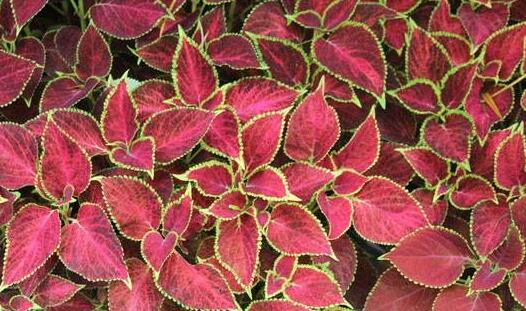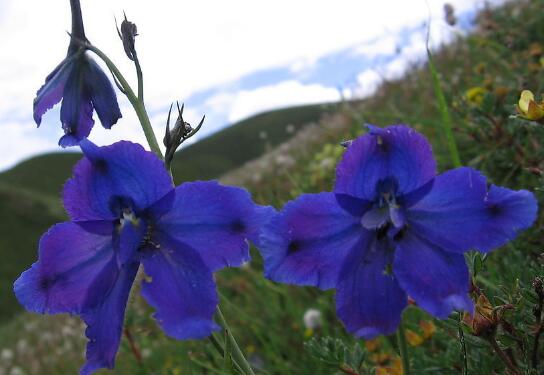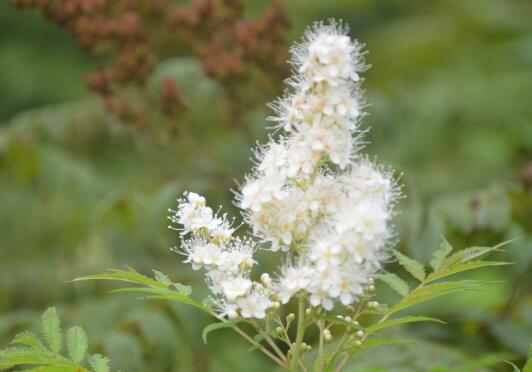How to raise colourful leaf grass, the breeding method and matters needing attention / environment should be appropriate.
We know that there are many functions and functions of colored leaf grass, and ornamental function is one of them. if we want to make it more beautiful, we need to master scientific planting methods, so how to raise colored leaf grass? Let's take a look at the breeding methods and points for attention of colourful leaf grass.
How to raise colourful leaf grass

Before breeding colourful leaf grass, it is necessary to understand its growth habits. Colourful leaf grass is a kind of plant that likes warm and humid environment, it has strong adaptability and likes plenty of sunshine, but it also has certain shade tolerance ability, as long as the winter temperature is not lower than 10 degrees, it can survive the winter smoothly.
Culture methods and points for attention of Colored Leaf Grass
1. The most suitable soil
Coloured leaf grass can adapt to a variety of soil environment, such as acid, alkaline can grow normally, but it is the most suitable soil is fertile, loose, well-drained, humus-rich acid soil, so garden soil, rotten leaf soil, river sand is the best.
2. The most suitable light
Because the appreciation of colourful leaf grass mainly comes from its leaves, if the leaf color is bright, then the ornamental value is high, on the contrary, if the leaf color is dim, it is not so beautiful, and to make the leaf color bright, you need appropriate light, and its most suitable lighting condition is soft and sufficient, summer needs to avoid direct sunlight, and pay attention to the environment not to be too shady.
3. The most suitable temperature
Colourful leaf grass likes the warm environment, its most suitable growth temperature is 18-25 degrees, should keep the temperature above 10 degrees in winter, the temperature is too low will cause the leaves to turn yellow, and the 5 degrees environment will make the plants freeze to death.
4. The most reasonable watering
Colourful leaf grass is a kind of plant with high demand for water, lack of water will cause it to grow slowly, and the leaves are not glossy, so how to raise colourful leaf grass in terms of watering? Therefore, in watering must be appropriate, in order to ensure that the soil is moist, to create a humid environment is very important.
5. The most scientific fertilization
In the cultivation methods and matters needing attention of colourleaf grass, its demand for fertilizer is not high, but it is important to ensure the nutrition needed for growth, so it is necessary to apply base fertilizer at the bottom of the soil when planting. In appreciation, the application of nitrogen fertilizer 1-2 times a month can promote leaf growth.
Matters needing attention in raising colored leaf grass
1. The environment should not be too dark
Many flower friends will raise colored leaf grass indoors in the form of potted plants, if this is the case, we must pay attention to the environment is not too dark, otherwise it will cause the leaves to lose their luster, and the leaf color is not strong enough.
2. It is not easy to fertilize and water too much.
Although colourful leaf grass likes the wet environment, do not allow too much when watering, according to the principle that there is no stagnant water in the basin, and do not continue watering when the soil is still moist. 3-4 days after watering, the soil is dry and then watered for the second time.
3. Pay attention to heat preservation in winter
The cold resistance of colourful leaf grass is poor, and frostbite may occur if the temperature is lower than 5 degrees, so we need to pay attention to the change of air temperature in the cold winter, and take heat preservation measures as soon as possible, such as moving back indoors or putting on plastic bags and so on.
How to raise coloured leaf grass well
In order to raise the colored leaf grass well, in addition to understanding the above points, we also need timely pruning and pest control. For example, it should be topped at the seedling stage, and then it should be thinned when the branches and leaves are too dense, while diseases and insect pests should be prevented at ordinary times.
When does the colored leaf grass blossom (a few months) how to prune the colored leaf grass
Colourful leaf grass is a foliage plant with high ornamental value. As its name implies, its leaves have several colors, bright and gorgeous, especially beautiful, and are generally used for planting in parks or courtyards, as well as potted plants at home. So since colourful leaf grass is called grass, will it still blossom?
When will the coloured leaf grass blossom (a few months)
Coloured leaf grass flowering in summer and autumn, terminal raceme, flowers small, light blue or white. It blossoms once a year, and the flowering period is about a week. However, the environment is different in different regions, and some areas bloom from August to September.
How to prune the colored leaf grass
1. Pick the heart many times during the growing period
During the growth period of this plant, when it grows 4-6 leaves, it is necessary to pick the heart more times to promote its secretion of hormones. In this way, it can develop rapidly, make the appearance more plump, and meet the needs of viewing as soon as possible. In order to have a good appreciation of leaves, the inflorescences of leaves should be removed as soon as they are generated. Among them, for the mother plant that keeps the seed, it is necessary to reduce the number of heart picking and let it blossom and bear fruit before entering winter.
2. Leave branches after flowering and subtract the excess parts
After the flowering period, the colored leaf grass should also be pruned properly. It is necessary to retain some branches of 2-3 nodes, and then cut off the rest of the branches, in order to promote the plant to grow new branches, so that it can continue to grow, maintain vigor and vitality.
3. After pruning, ensure the living environment needed for its growth.
Colorful leaf grass is suitable for growing under the condition of light, with the sunshine, it can make the leaf color bright and beautiful. The suitable temperature for growth of colourful leaf grass is 20-25 degrees Celsius. Therefore, in summer, in order to ensure that the leaves have luster, we need to do shading treatment, can not make the strong sunlight directly. And spray water on the leaves to lower the surrounding temperature. In winter, you should also let it go indoors and spend it in a greenhouse.
How to cut Colored Leaf Grass
1. Cutting time
The propagation methods of colourful leaf grass are sowing and cutting, of which the cutting propagation method is the simplest. It can be carried out all year round, except for low temperature in winter and full rooting, the temperature in spring and summer is suitable, which is the best cutting season.
2. The branches of colourful leaf grass
Colourful leaf grass is a perennial herb, but it is cultivated one more year in the family. It is very suitable for the propagation of terminal bud cuttings.
Select 3-5 nodes with terminal buds. Stem nodes 5 to 10 cm in length are used as cuttings. After cutting, the local leaves are trimmed to avoid the failure of cuttings caused by the water loss of too many branches. Usually, all the leaves in the lower part of the branch should be cut off, and it is enough to keep the upper leaves.
3. Cutting methods of Colored Leaf Grass.
The color leaf grass grows rapidly, and the robust branches can be cut in the flowerpot with a diameter of 7.5 cm. After the cutting is successful, it can be maintained directly in the flowerpot. If the space in the home is larger and the environment is suitable, it can be cut in a larger flowerpot.
Indoor culture method of colourful leaf grass
Fertilizer: this is of course an essential factor for its growth. In fact, it is a very fat-loving variety. In addition to adding some organic fertilizer to the nutritious soil when planting, some manure should be applied after each heart picking. In addition, some urea and other fertilizers can be sprayed on the leaves after autumn.
Watering: the amount of water consumed in summer is the largest, about twice a day. However, the soil should not be too wet, otherwise it is easy to grow in vain, so the overall shape will be affected.
Temperature: the suitable range is 20 to 25 degrees Celsius, and the temperature in winter should not be lower than five degrees Celsius, which should be relatively easy to guarantee indoors. However, in order to ensure its healthy growth, it is better to keep the temperature within the appropriate range.
Lighting: if all-day sunlight is provided, the color of its leaves will be more bright, so the light must be guaranteed except when the summer light is particularly strong.
As mentioned above, although colourful leaf grass is an ornamental plant, and its main feature is its colored leaves, it will also blossom. Generally to August, September will open a small and exquisite lavender florets, although not as bright as its leaves, but also very elegant oh!
Culture methods of Phalaenopsis Video _ Culture methods and matters needing attention
Phalaenopsis, also known as Phalaenopsis and Taiwan Phalaenopsis, is a kind of flower plant belonging to the genus Butterfly of Orchidaceae. it is native to subtropical rain forest and is a kind of epiphytic orchid. Phalaenopsis white thick air root is exposed around the leaves, it can absorb nutrients in the air, but also can grow to achieve the effect of photosynthesis. During the Spring Festival, Phalaenopsis plants will produce long pedicels from leaf axils, thus forming butterfly orchids dancing like butterflies, which are very popular with people. Butterfly love is mainly distributed in Indonesia, Taiwan, the Philippines, Thailand, Malaysia and other regions, with the reputation of queen of orchids. Next, let's take a look at the Phalaenopsis culture method is video, as well as Phalaenopsis culture methods and points for attention. [Phalaenopsis culture method video]
The name of Phalaenopsis is based on the butterfly-like orchid in ancient Greek. It can help absorb nutrients in the air and survive, and it mainly belongs to the category of aerial orchids. It belongs to a larger family of tropical orchids. Phalaenopsis in Taiwan is famous all over the world, while there are 50 or 60 native species of Phalaenopsis in Indonesia, Borneo, Philippines and Malaysia. The color of Phalaenopsis is rich and colorful, there are white, yellow spots, pink and so on, are very many. According to botanists using precious varieties for artificial cultivation, so as to improve a variety of flower shapes, colors of Phalaenopsis, and in the flower size is also very great achievement. And Phalaenopsis's white, pink, yellow erythema, red dots and red lines, pure yellow, white flowers and red and other colors can be seen, Phalaenopsis can be called after today's orchids, is a delightful flower plant. [growth habits of Phalaenopsis] Phalaenopsis is native to tropical rain forests and likes to grow in a warm environment, but it is afraid of the cold. The suitable temperature for growth is 15-20 degrees Celsius. If the temperature is below 10 degrees Celsius in winter, it will stop growing. The temperature should not be lower than 5 degrees Celsius, or the plant will die. Phalaenopsis, which is native to tropical Malaysia, belongs to Phalaenopsis. Phalaenopsis is a perennial herb, and Phalaenopsis grows luxuriantly along the river coast with high temperature and humidity. However, in the case of high temperature and humidity, Phalaenopsis will be harmful to diseases and insect pests, and the humidity suitable for growing environment is 60-80%. [Phalaenopsis culture methods and points for attention] 1. Soil: the breeding method of Phalaenopsis is mainly sowing and reproduction, and it is an epiphytic orchid whose aerial roots are attached to rocks or tree trunks, mainly absorbing water and nutrients from the air. Phalaenopsis is mainly cultivated with loose and breathable materials, it is best to choose bark, broken bricks, coconut shells, tree fern roots, water moss, etc., using the county party committee or ceramsite as the matrix, the seedlings are directly fixed in charcoal, so that Phalaenopsis grows naturally in the process of growth, and the pH value is 6.5. It is best to use bryophytes and aquatic plants, choose a softer soil is the best. two。 Temperature: Phalaenopsis has relatively strict requirements on temperature. the suitable temperature for growth is 15-30 degrees Celsius during the day and 23 degrees Celsius at night. If it is lower or higher than this temperature, it will be not conducive to the growth of Phalaenopsis. Serious will cause leaves yellowing. Fan water curtain can be used to cool down when the temperature is high, and a heater can be used to increase the temperature when the temperature is low. 3. Humidity: in the vegetative growth stage of Phalaenopsis, the humidity requirement of more than 90% is the best state, and the humidity of promoting flowers should be kept at 70-80%, and the humidity requirement should be 50% after flowering. It is most appropriate to use water curtain ventilation or ground space humidity control measures. 4. Lighting: the proper lighting of Phalaenopsis is the best, it is a shade-loving plant, but it also needs sufficient light to provide energy for itself, especially in the flowering period, Phalaenopsis needs more adequate light to avoid direct sunlight. Phalaenopsis is of very high air quality, so it is best to put it in a ventilated place for breeding, which can effectively prevent the emergence of insect pests. 5. Fertilization: in the spring Phalaenopsis growing period, you can choose to use Phalaenopsis special nutrient solution to fertilize, in winter, if the amount of fertilizer is reduced, it will affect the flowering next year. The withered flowers should be pruned after the couple, which can effectively reduce the consumption of nutrients, so that the withered flowers don't look good hanging from them. 6. Moisture: Phalaenopsis leaves are not easy to store water, so it is necessary to replenish sufficient moisture to the soil. Phalaenopsis new roots should be over-watered when they are growing vigorously, and the amount of water should be reduced when they are dormant after flowering. In spring and autumn, they are watered at about five o'clock every day, while when plants are growing vigorously in summer, they are watered in the morning and afternoon respectively. The temperature in winter is low and the light is relatively weak. Need to water every other week, after the cold wave, do not water too much, to keep the soil dry, so it is not easy to cause the plant to freeze to death. [matters needing attention in Phalaenopsis Culture] Phalaenopsis should be properly watered when breeding butterflies, and the amount of water should not be too frequent, otherwise it will cause the root of Phalaenopsis to rot. Also pay attention to keep warm, the temperature is too low will make Phalaenopsis dormant, especially in winter, we must pay attention to keep warm. Proper fertilization is very rude to the growth of Phalaenopsis. Once a week or so during the growing period, you can choose to apply professional fertilizer. The flowerpot for breeding Phalaenopsis is also very important, and the appropriate large flowerpot is more conducive to the growth of Phalaenopsis.
More information about the efficacy and function of egg yolk fruit Cistanche deserticola what is the role of magnolia Suoyang pictures of Magnolia Magnolia
- Prev

How to cultivate delphinium, cultivation methods and precautions of delphinium/sufficient light
Delphinium is a kind of ornamental flower plant, in our country it is also a lot of people, but when it needs to pay attention to a lot of places, about how to raise delphinium? What are the breeding methods and precautions of delphinium? The following small series takes everyone to understand
- Next

Pearl plum bonsai how to raise, pearl plum culture methods and matters needing attention / sufficient light
Pearl plum is a kind of highly ornamental flower plant, which can be seen in many parts of our country, and there are many people who breed it, but there are many places that need to be paid attention to in the process of cultivating pearl plum. If improper cultivation is easy to appear some bad phenomena, then how to raise pearl plum bonsai?
Related
- Fuxing push coffee new agricultural production and marketing class: lack of small-scale processing plants
- Jujube rice field leisure farm deep ploughing Yilan for five years to create a space for organic food and play
- Nongyu Farm-A trial of organic papaya for brave women with advanced technology
- Four points for attention in the prevention and control of diseases and insect pests of edible fungi
- How to add nutrient solution to Edible Fungi
- Is there any good way to control edible fungus mites?
- Open Inoculation Technology of Edible Fungi
- Is there any clever way to use fertilizer for edible fungus in winter?
- What agents are used to kill the pathogens of edible fungi in the mushroom shed?
- Rapid drying of Edible Fungi

